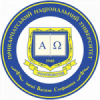-
##submission.downloads##
Опубліковано
2014-12-22
Як цитувати
[1]
-, .-. 2014. -. Журнал Прикарпатського національного університету імені Василя Стефаника. 1, 2-3 (Груд 2014), 13–17. DOI:https://doi.org/10.15330/jpnu.1.2-3.13-17.
Номер
Розділ
Articles







